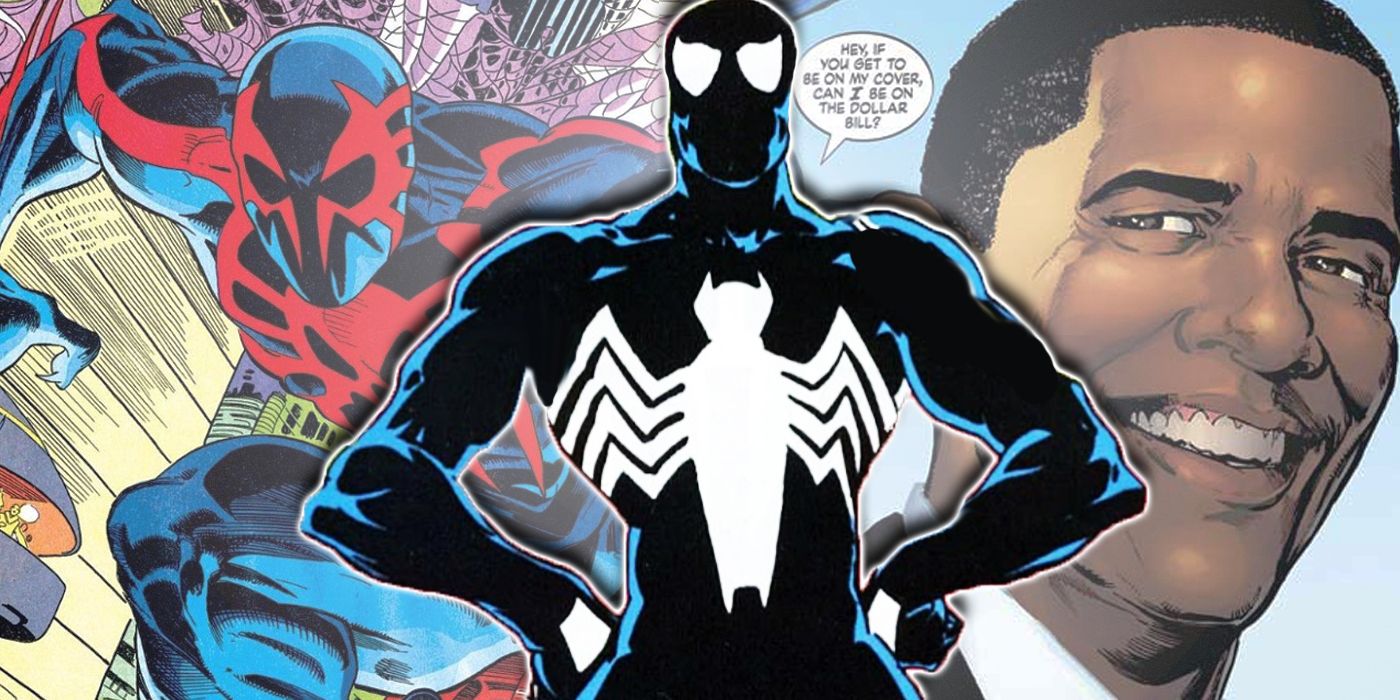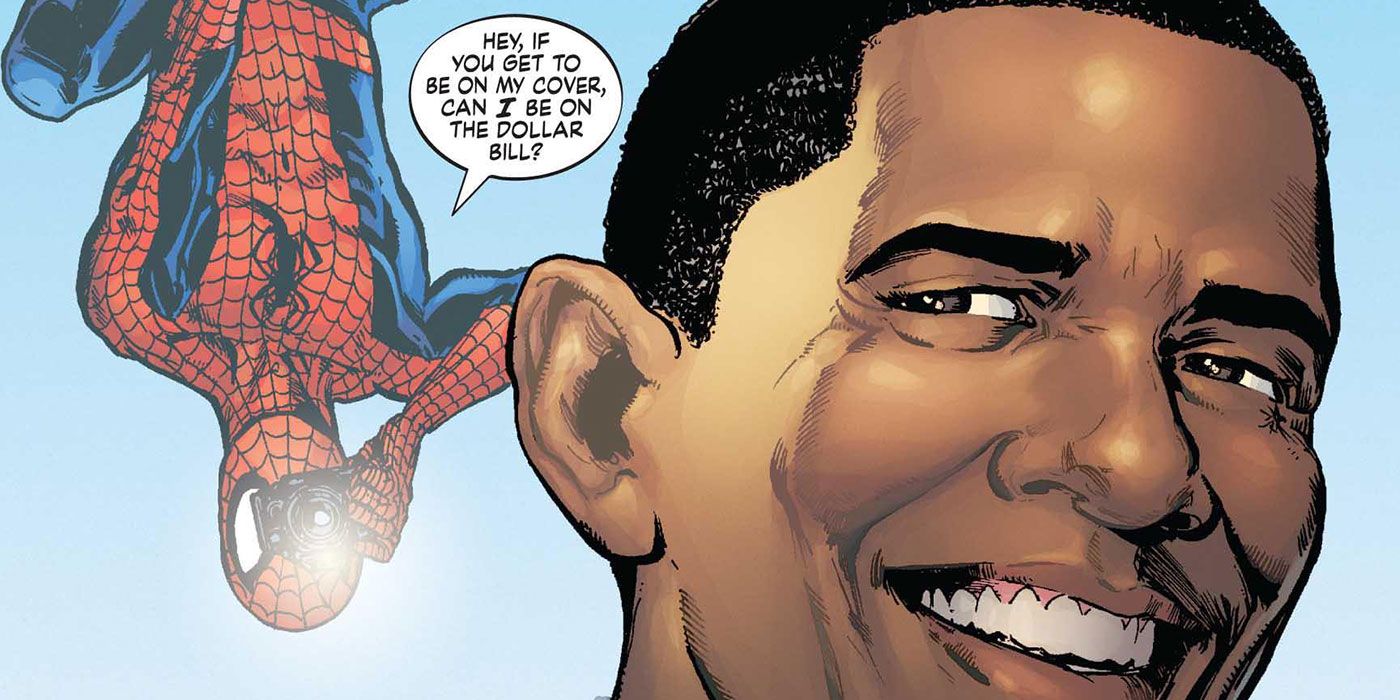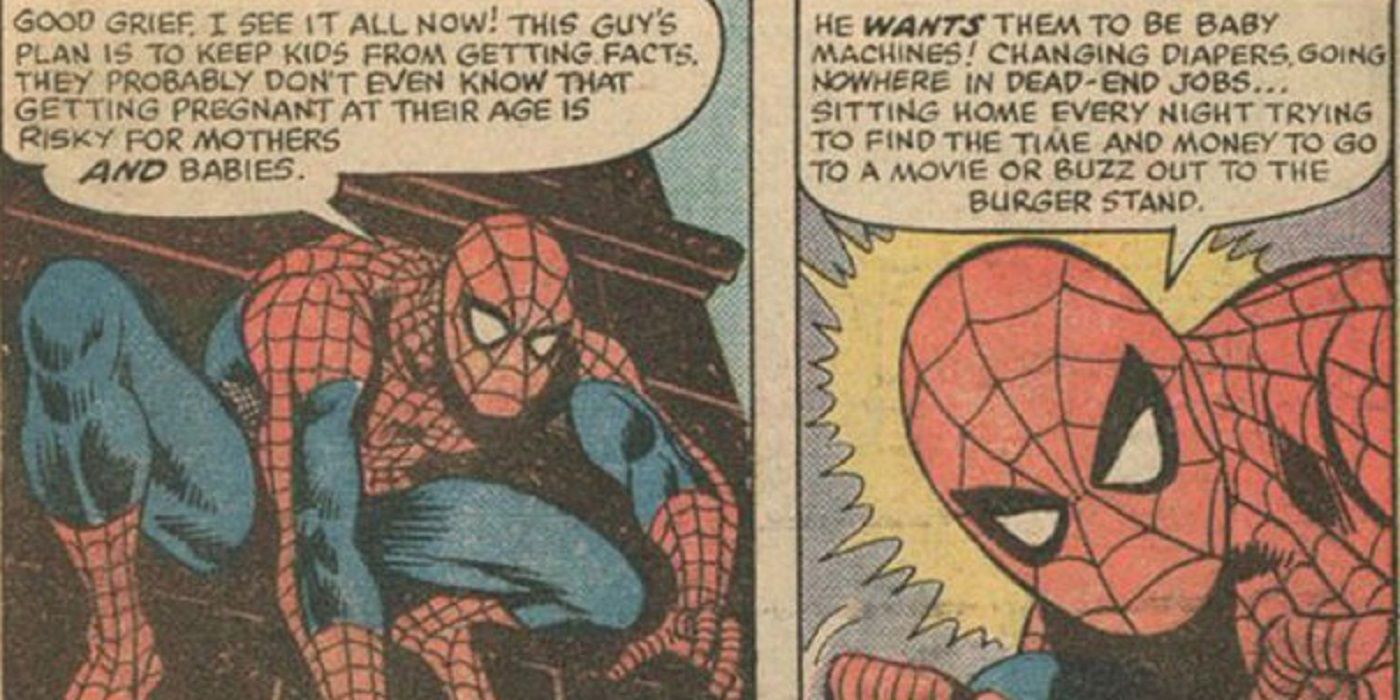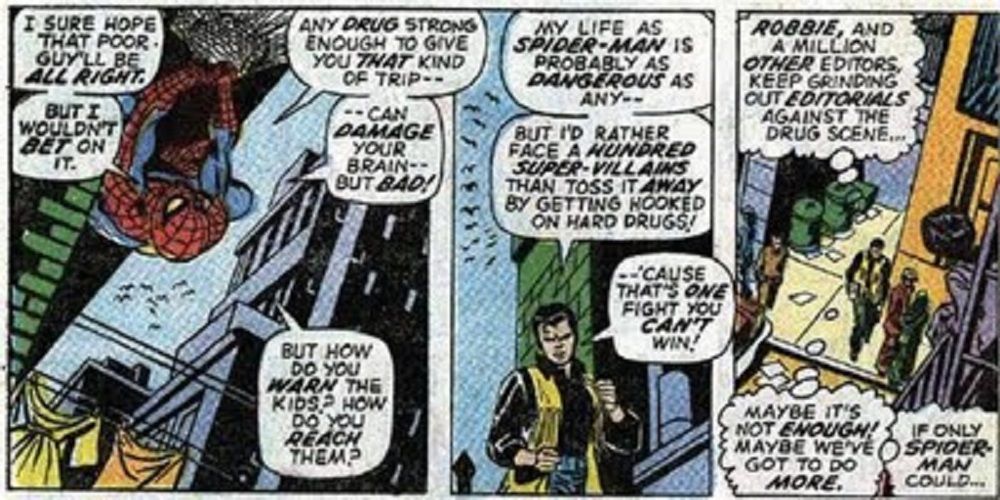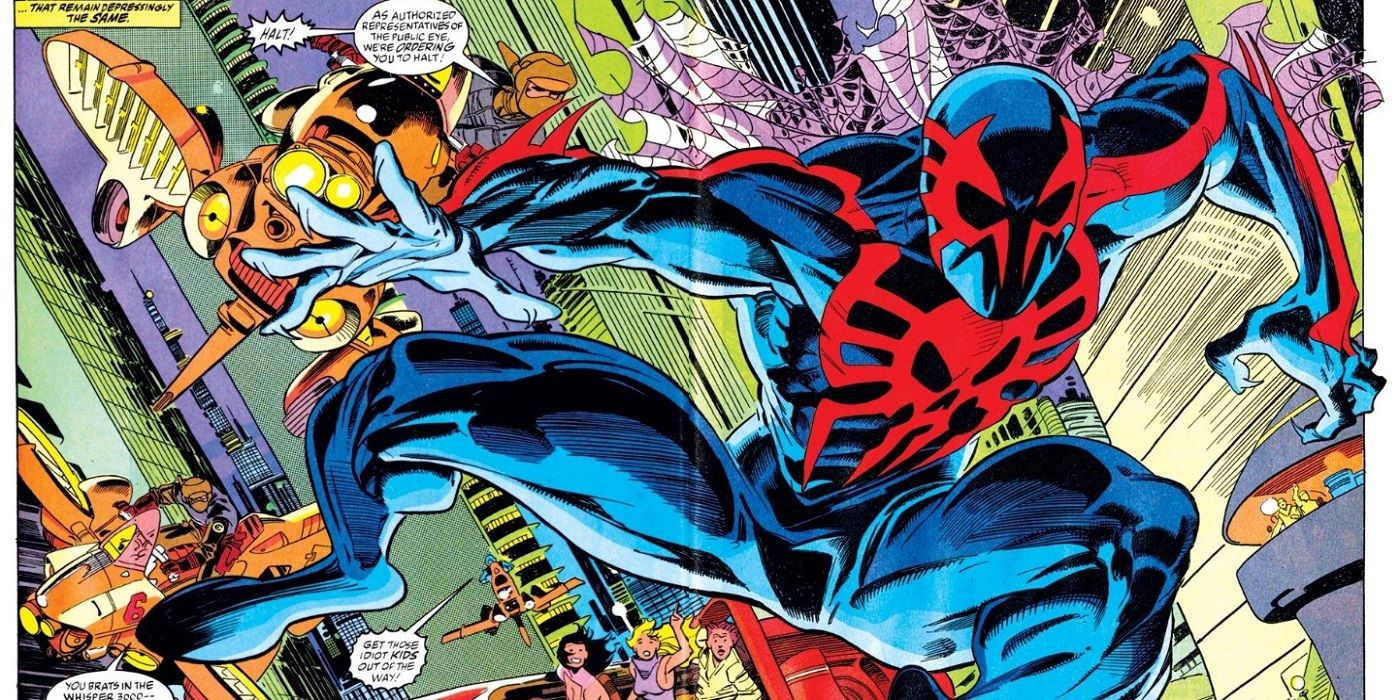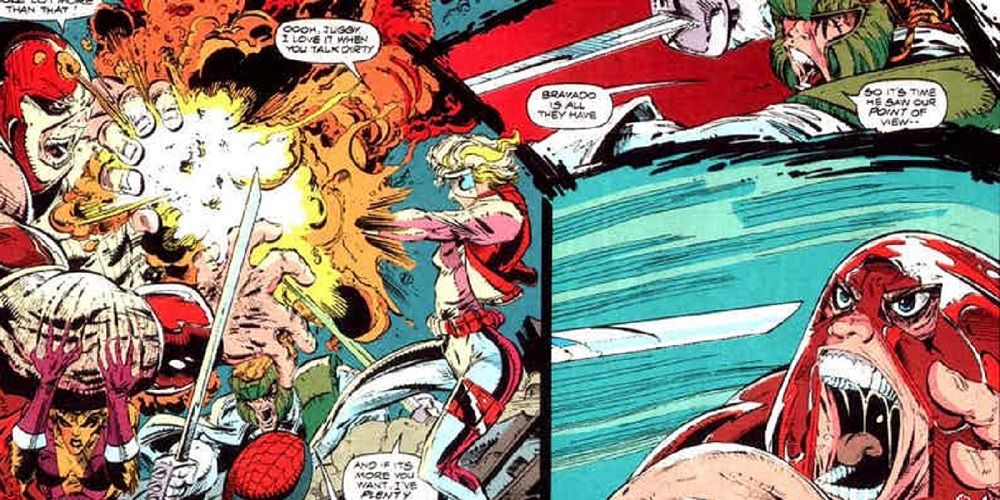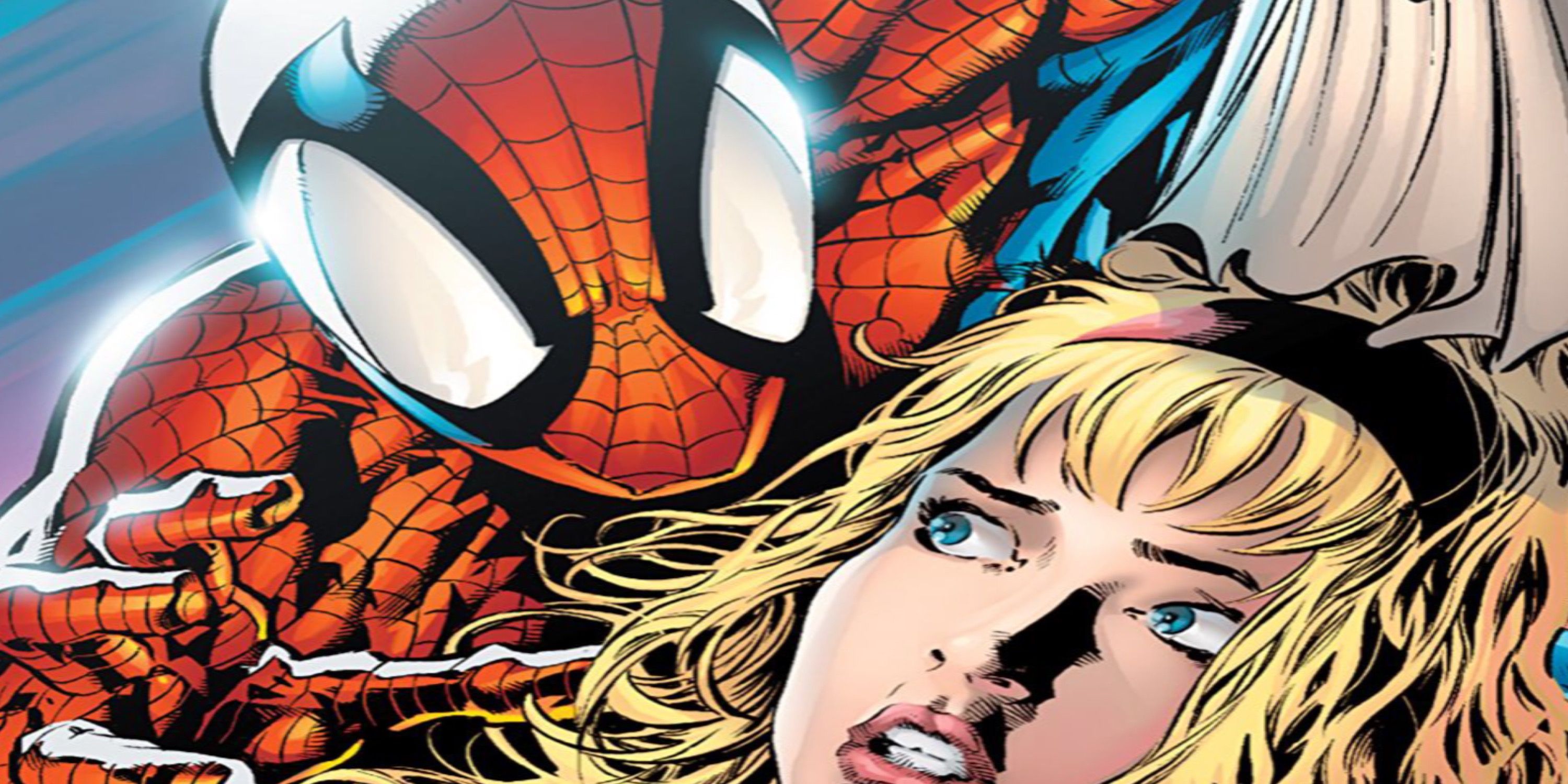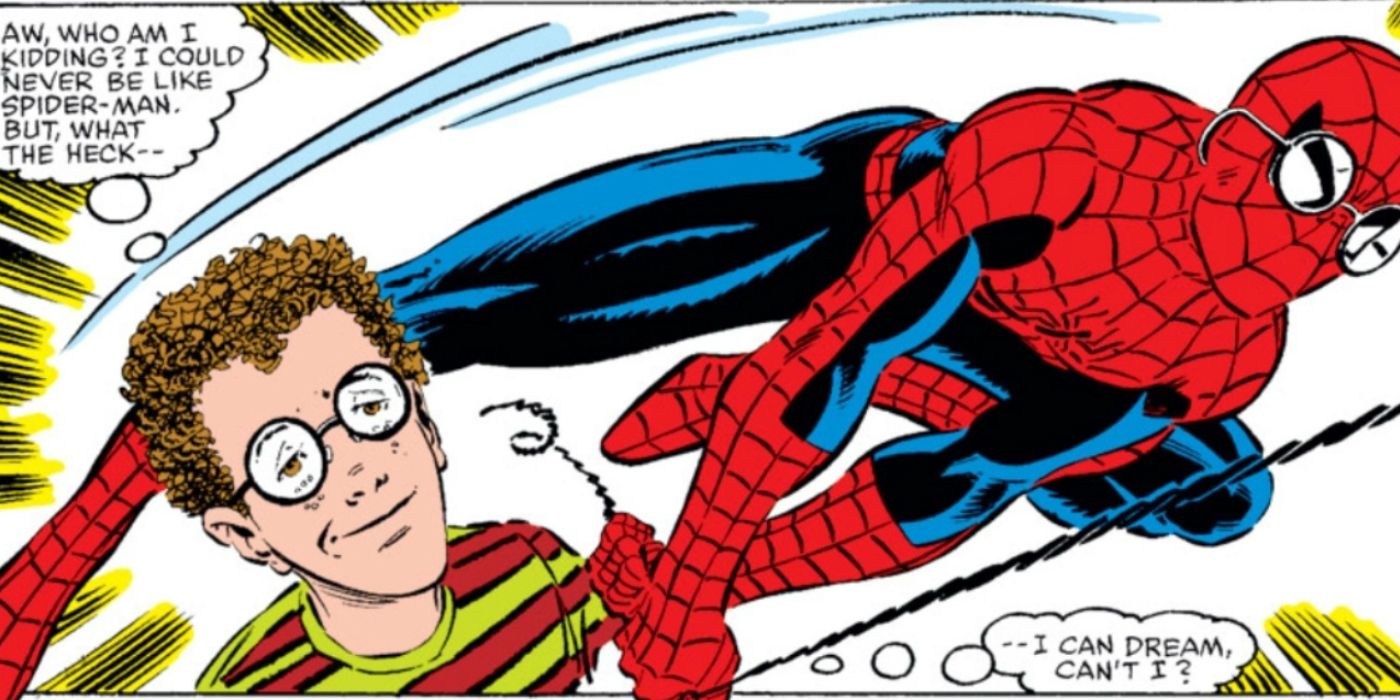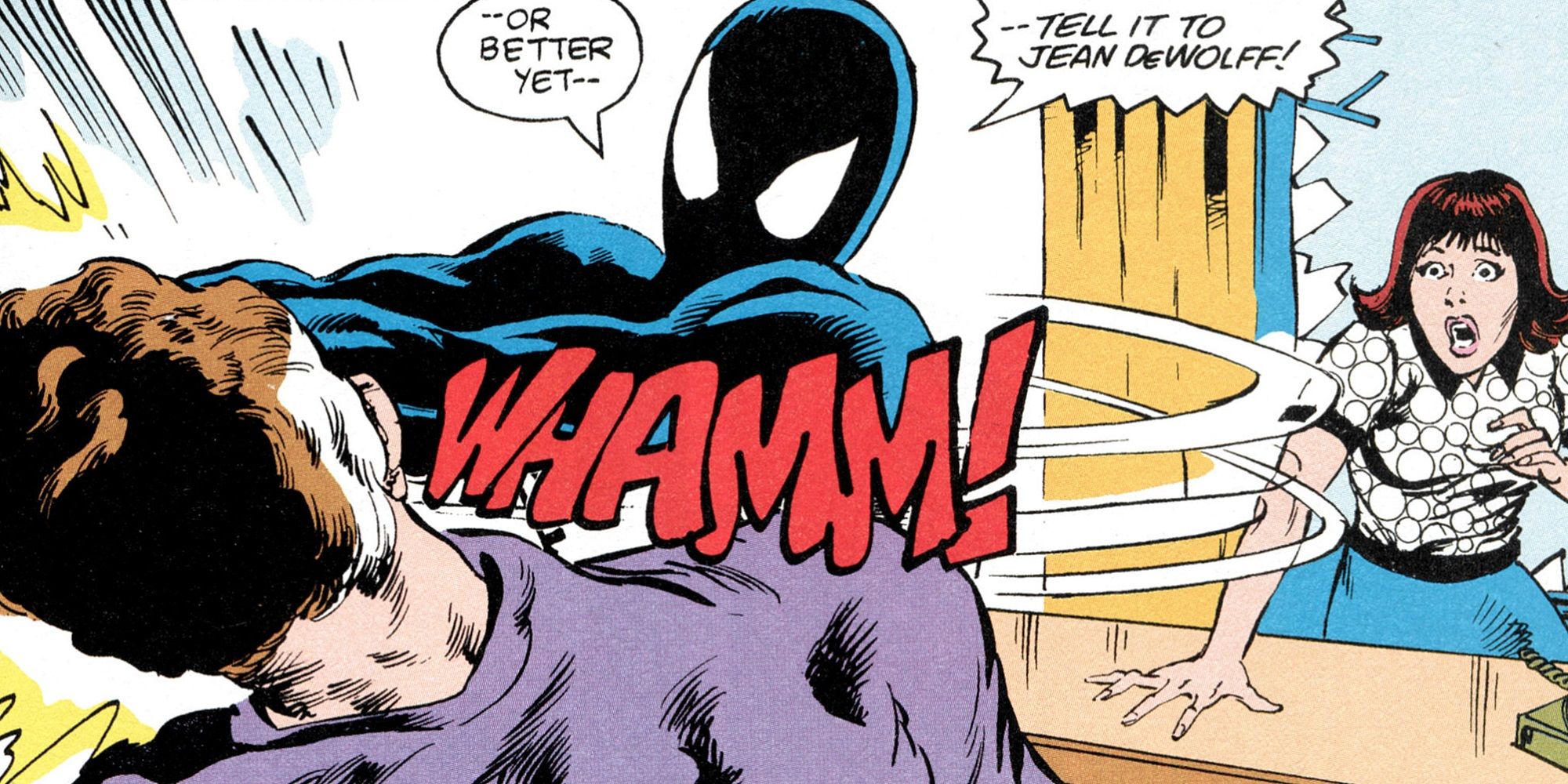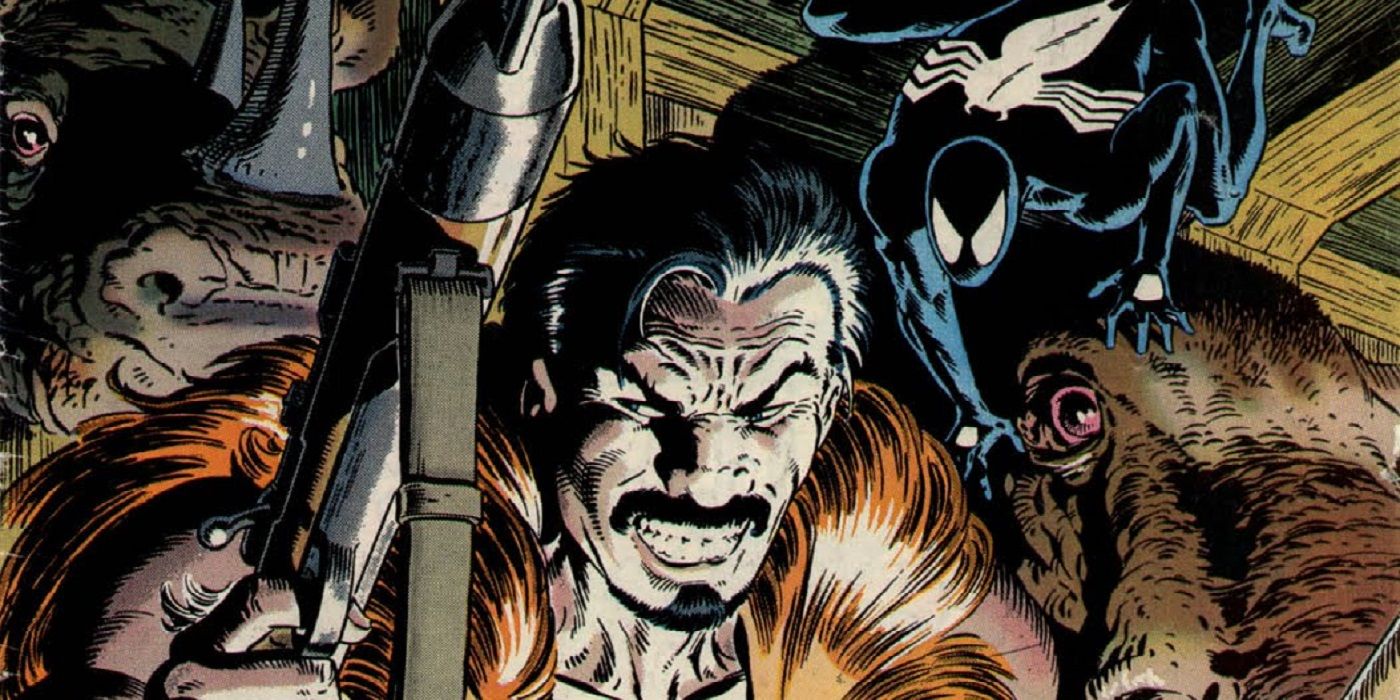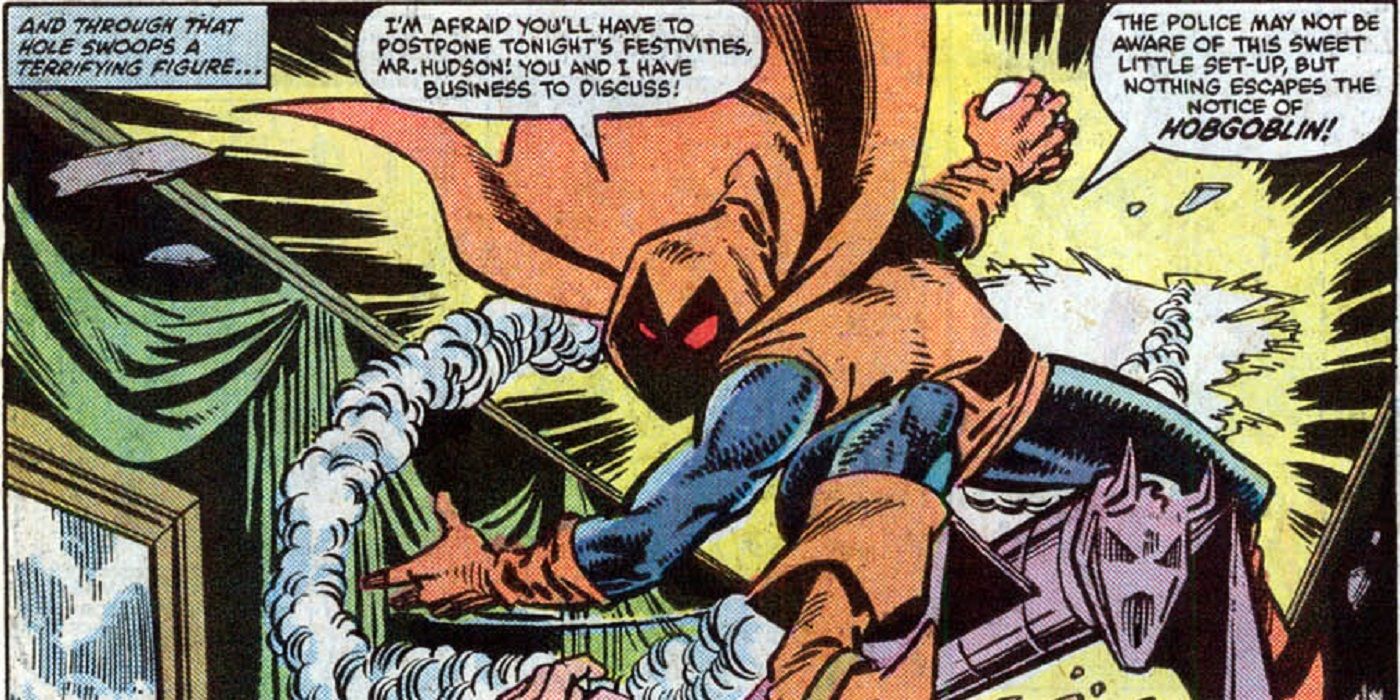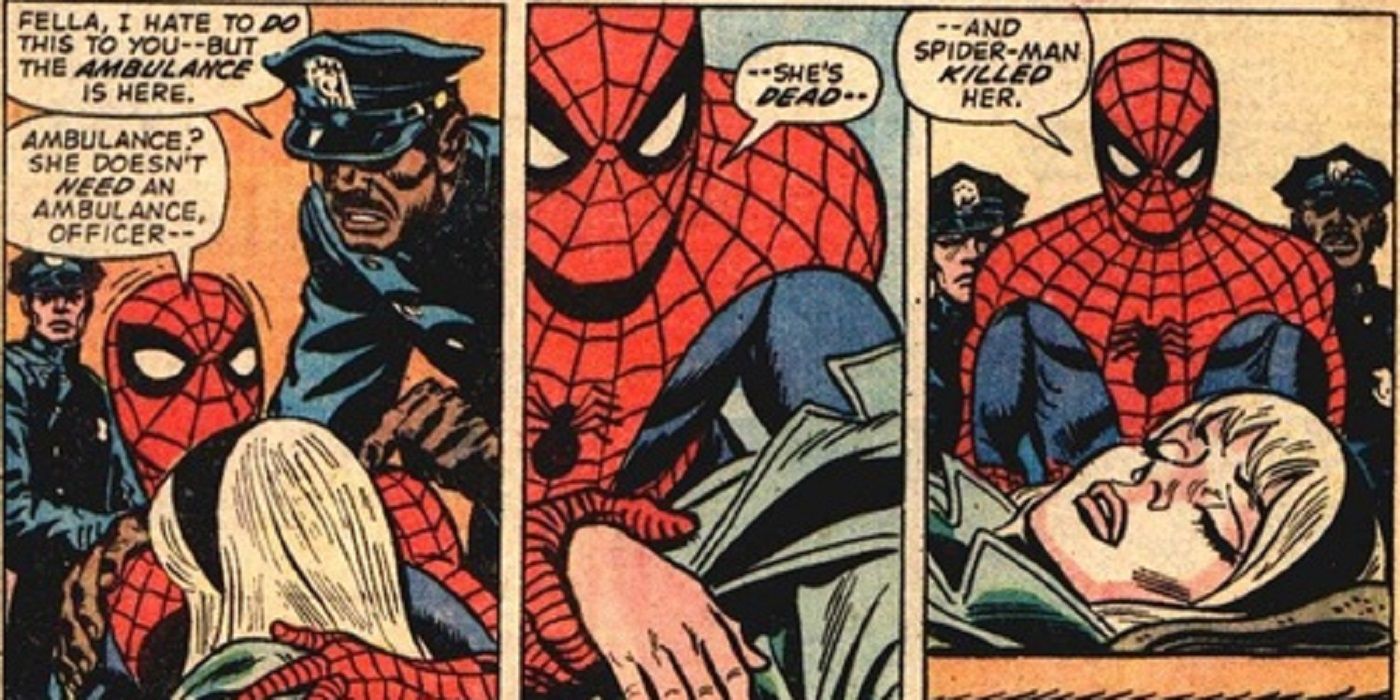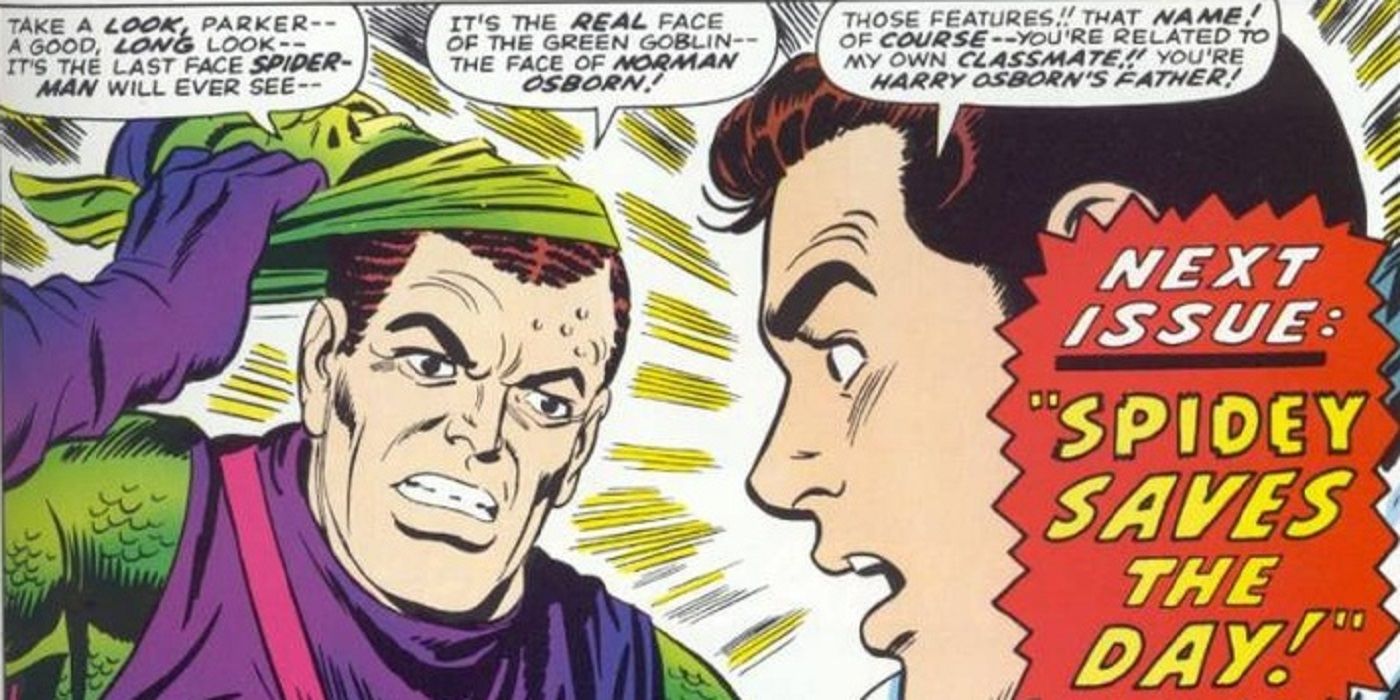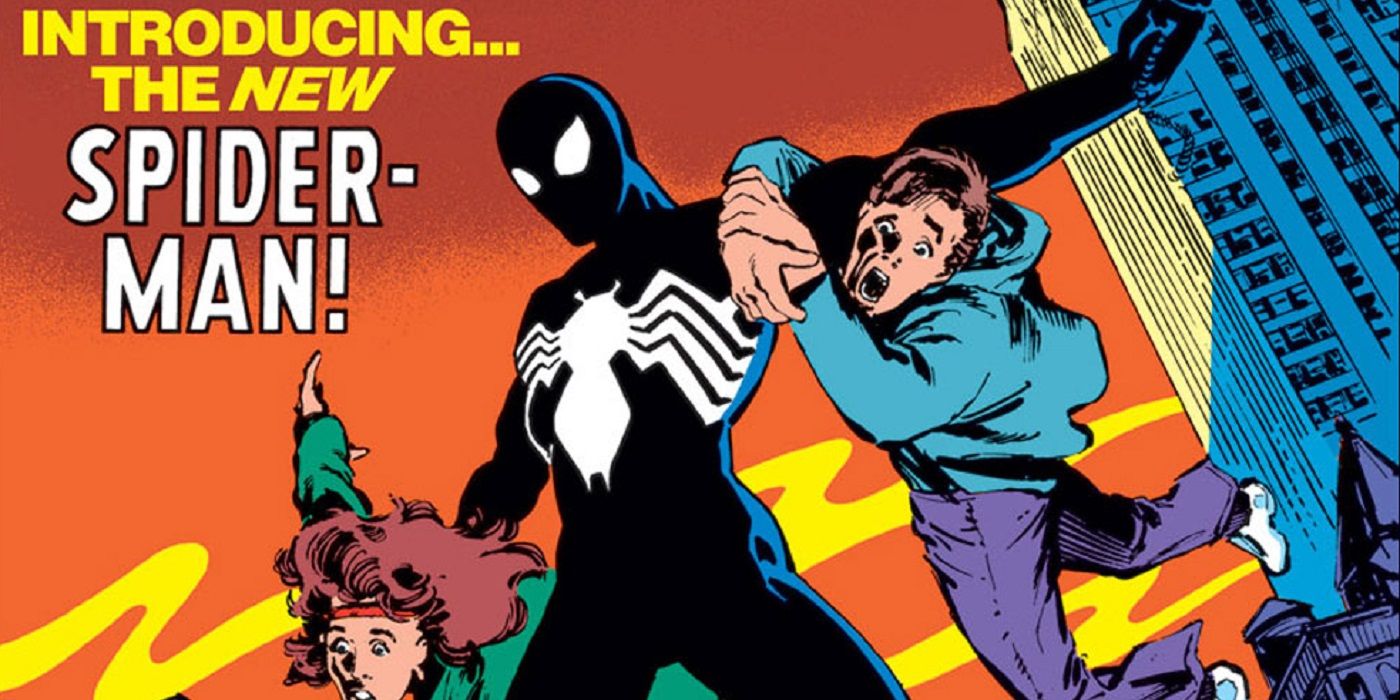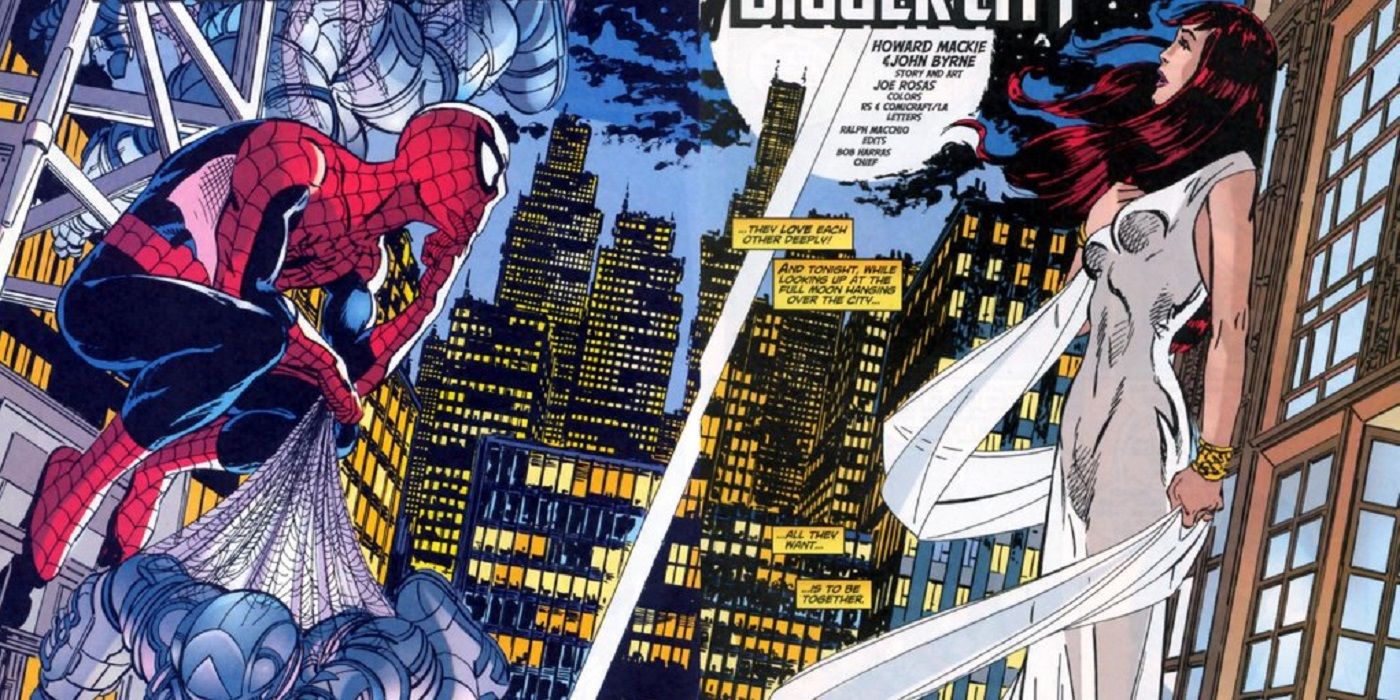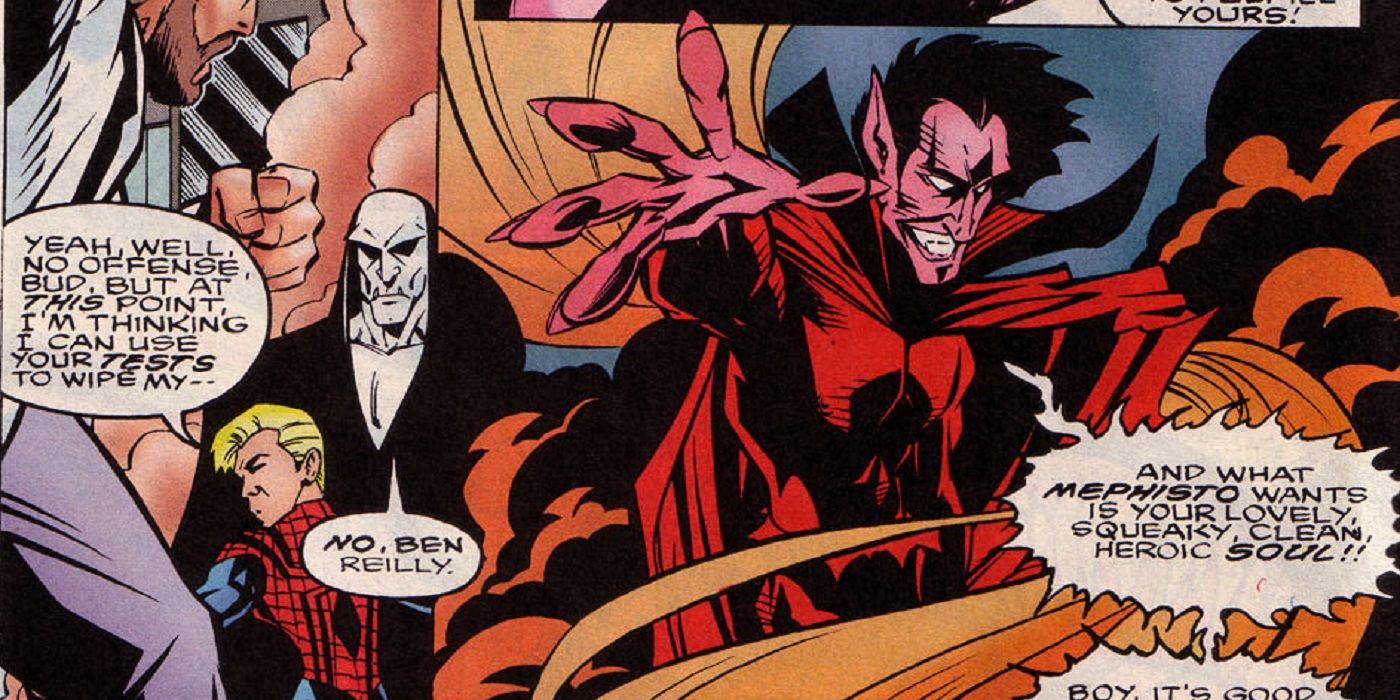Since his 1962 debut in Amazing Fantasy #15, Spider-Man has seen and done things that most other superheroes can only dream about. He's headlined numerous solo titles, been a member of multiple teams and is the undisputed King of the team-up: in short, there are not many things that Spidey hasn't had to deal with over his long and storied career. Clones? No problem! Arch-enemy marrying into the family? Easily remedied. Secret identity revealed to the world? He knows a guy. And yet, as exciting as Spider-Man's life may be, both on the printed page and on the silver screen, it often pales in comparison to the conflict and intrigue behind the scenes.
RELATED: The 15 Craziest Spider-Man Stories (In The Last 10 Years)
Everyone knows that comics are a collaborative process, with a host of workers beavering away in order to ensure that titles hit the shelves on a regular basis. While all those involved will be keen to deliver the best product possible, it's likely that there may be considerable disagreement about what that means. When you may have a writer, artist, editor and publisher all with different views of Spider-Man and how he should act, the potential for conflict is high. Over the years, this tension has led to a great deal of behind-the-scenes drama, and here we highlight 15 of the most notable feuds and changes.
15 OBAMA CONTROVERSY
In 2009, Marvel secured a ton of publicity and a whopping load of sales when they had President Obama appear in Amazing Spider-Man #583. Obama was on the issue's cover, illustrated by Phil Jiminez, and was also the focus of an interior story by Zeb Wells and Todd Nauck. The comic sold by the truck load, going through multiple printings, but not everyone was happy about the issue or its contents. One of the dissenting voices was that of Erik Larsen, the former Spider-Man artist who had gone on to write and draw Savage Dragon for Image Comics.
Obama had previously appeared in Savage Dragon #137 the previous year, and Larsen complained that Marvel had duplicated both his incentive cover and use of the "terrorist fist jab," and that the story concept was similar to one he had published four years previously. The feud would later escalate, with Larsen and Spider-Man editor Steve Wacker publicly trading barbs.
14 SPIDEY VS. UNPROTECTED SEX
As the popularity of superheroes in the 1970s continued to grow, their ability to reach a huge cross-section of kids made them a natural fit for involvement with Public Service Announcements. One of the most unusual was Spider-Man being used to warn America's youths about the dangers of unprotected sex. The comic -- a 1976 collaboration between Marvel and Planned Parenthood -- saw Spidey in conflict against an alien called Prodigy.
Prodigy had the power to make people believe his every word, and used this to convince girls that they wouldn't get pregnant after unprotected sex. The reason for this suspect advice? Prodigy was trying to create a pregnancy boom, so that he could take the babies back to his home planet and use them as child labor. Spidey managed to stop Prodigy's plan (while proving himself surprisingly judgmental on the topic of teen mothers).
13 GOVERNMENT DRUGS
By the early '70s, the perception of comics was changing, with many people recognizing that their popularity with young people could make them a useful marketing tool. In 1971, the Department for Health, Education and Welfare wrote to Stan Lee, suggesting that it would be beneficial if Marvel produced a story that warned kids about the dangers of drug addiction. Lee agreed and this request led to a three-part storyline in Amazing Spider-Man #96-98 that saw Harry Osborn in the grip of a pill addiction.
The only problem for Marvel was the Comics Code Authority, which, since the moral scare of the 1950s, had evaluated all comics content. While this didn't explicitly prohibit drug use, it did prohibit all elements considered in violation of good taste or decency. Considering the message of the story to be too important, Marvel made the decision to publish the issues without the seal of the Code's approval.
12 KILLING SPIDER-MAN 2099
The Marvel 2009 line was launched in 1992, spotlighting Marvel heroes 100 years in the future. The initial wave of titles included the Stan Lee written Ravage 2099 and future versions of the Punisher, Spider-Man and Doctor Doom. Spider-Man 2009, created by Peter David and Rick Leonardi, was an instant hit with fans. Miguel O'Hara was a different sort of Spider-Man -- a geneticist whose DNA was re-written with a spider's genetic code -- and David quickly fleshed out his world.
Over time the 2099 universe expanded, with new titles launched featuring new versions of the X-Men, Hulk, Ghost Rider and more. Then, in 1996, 2009 editor Joey Cavalieri was fired as part of Marvel's cost cutting reorganization. Peter David quit writing Spider-Man 2009 in protest, along with several other writers for the line. His last issue was #44, with the title being cancelled two months later.
11 A FATAL STABBING
Todd McFarlane was one of the first superstar artists in comics. His fluid Spidey, with its enlarged eyes and spaghetti webbing, proved incredibly popular, driving sales on Amazing Spider-Man ever upwards. After some years, McFarlane became keen to also write his own work. Marvel gave him a new title, the self-titled Spider-Man, to write and draw. Gargantuan sales ensued.
The problem was that although sales were through the roof and McFarlane was getting to write, as time went on, he increasingly felt stifled by editorial asking him to make changes. The final straw was in Spider-Man #16, which featured a battle between Spidey, X-Force and the Juggernaut. McFarlane drew Shatterstar stabbing his sword through Juggernaut's eye. Unsurprisingly, Marvel considered this too graphic and requested that the panel was changed, leading to McFarlane resigning from the book.
10 HIS ILLEGITIMATE KIDS
"Sins past," by J Micheal Straczynski and Mike Deodato Jr, ran from Amazing Spider-Man #509-514. The controversial storyline revealed that Gwen Stacy -- Peter Parker's great love -- had slept with Norman Osborn, secretly giving birth to twins. These children had been artificially aged and had returned to New York City in order to get revenge on Peter Parker. The retcon that Gwen had slept with Norman caused genuine outrage among many fans, but the storyline almost generated a whole different level of controversy. The original father of the twins was not meant to be Norman Osborn, but Peter Parker.
This was JMS' original plan for the storyline, but Marvel editorial quashed the idea. Certain people within Marvel had long harbored doubts about the Spider-marriage, believing that it aged Peter and made him less relatable. So it's not surprising that the prospect of Peter having two ADULT children running around was nixed so quickly.
9 A SPIDER-MAN DIVORCE
Roger Stern was one of the most prominent Spider-Man writers of the '80s, with acclaimed runs on both Spectacular Spider-Man and Amazing Spider-Man. Stern's stint on Amazing re-introduced Mary Jane, after a long absence from the books. Peter was involved with the Black Cat at the time, so the relationship between Peter and MJ remained strictly platonic -- two old friends that knew each other well, being reunited.
In 1988, Stern was fired from Avengers after a disagreement with his editor, Mark Grunewald. Although on an exclusive contract with Marvel, Stern found that from this point on, no Marvel editor was returning his calls. The exception was the Spider-Man editor Jim Salicrup, who offered Stern work on Spectacular Spider-Man. However, this was in the immediate aftermath of the Spider-man marriage, something that Stern considered a huge mistake for both characters. He politely declined Salicrup's offer and left Marvel to work at DC.
8 HIS WRITER WAS AXED (ALMOST)
Peter David is one of Marvel's best known writers. He's had long and critically acclaimed runs on Incredible Hulk and X-Factor to name but two of his many series, and has spent time in the Spider-verse as writer on Spider-Man 2099, Friendly Neighborhood Spider-Man and Spectacular Spider-Man. But this success didn't happen overnight. In fact, when David first transitioned from Marvel's sales department into freelance writing, his new career almost finished before it had properly begun.
Jim Owsley (better known as Christopher Priest) was the editor of the Spider-Man titles when David began writing Spectacular Spider-Man. The run was well received, but Priest recounted on his Blog that he came under considerable and sustained pressure to fire the writer. His links to the sales department and his boss there, Carol Kalish, colored the views of many, with there being a widespread skepticism in editorial about the sales department and their methods.
7 HIS BATMAN STORY
"Kraven's last hunt" by J.M. DeMatteis and Mike Zeck was a landmark story. Most notably, it featured the demise of Kraven the Hunter, who had been a recurring Spidey villain since the Stan Lee/Steve Ditko era. It was also the first Spider-Man story to be told across all three Spider-Man ongoings, leading to a number of complaints from fans (particularly subscribers of one title) that they could only read some installments. Featuring Kraven "killing" Spider-Man and taking his place, the story was a darker and more psychological tale than typically featured in the Spider-books. Years later, DeMatteis revealed why: it was originally intended as a Batman story!
The original proposal had Hugo Strange "killing" Batman. Strange would subsequently attempt to become Batman, putting on the costume in order to prove his superiority. The idea was rejected by then Batman editor Denny O'Neil and later reconfigured as a Spider-Man story.
6 HOBGOBLIN'S IDENTITY
Roger Stern and John Romita Jr were the creative team on Amazing Spider-Man in the early '80s, introducing the Hobgoblin in Amazing Spider-Man #238. Readers went wild over this dangerous and mysterious villain, with there being considerable debate over his identity. However, Stern and Romita Jr left the book with #250, before they could reveal that the Hobgoblin was Roderick Kingsley.
Tom DeFalco took over as writer and, disagreeing with Stern's original choice, started laying the groundwork for the Hobgoblin's reveal as Richard Fisk, peppering the book with false suspects. But when DeFalco left the book in controversial circumstances, Spidey editor Jim Owsley revealed that Richard Fisk was actually the Rose. It eventually fell to Peter David to reveal that the Hobgoblin was Ned Leeds: a character who neither Stern nor DeFalco had truly considered a possibility, and who at the time of the reveal was already dead.
5 GWEN STACY ALMOST CAME BACK FROM THE DEAD
One of the great turning points of Peter Parker's life was the death of his great love, Gwen Stacy, in Amazing Spider-Man #121. Her death continues to haunt Peter to this day, with Spider writers often playing with Gwen's memory. Most recently, Gwen returned in the "Clone Conspiracy" storyline in Amazing Spider-Man, where she finally learnt Peter Parker's identity. However, there was one occasion where Gwen almost came back for good. The "Brand New Day" revamp of the Spider titles brought Harry Osborn back to life, and nearly did the same for Gwen.
Gwen's return was one of the main issues being discussed by the writers involved, particularly since this reboot would once again feature an unmarried Peter Parker. In the end, it was decided that Gwen should stay dead, Tom Brevoort arguing that her return would be "good for the shock of the moment, but detrimental in the long run."
4 THE FIRST GOBLIN
With their run on Amazing Spider-Man, from #1-38, Stan Lee and Steve Ditko created an all-time superhero classic, but behind the scenes things were less rosy. By the time of their last year on the title, the divide between Lee and Ditko was growing larger. Ditko was responsible for the art and lion's share of the plotting, yet felt undervalued. The two also clashed over the characterization of Peter Parker.
A pivotal flashpoint for this relationship came from the reveal of a long-time Spider-Man villain. Since his first appearance in Amazing Spider-Man #14, the Green Goblin's identity had been a mystery. Ditko wanted it to be a new character, while Lee believed that readers would feel cheated if it wasn't someone that they knew. In the end, Ditko quit, to be replaced by John Romita. In Romita's first issue, the Goblin was revealed to be Norman Osborn, the father of Peter's College friend, Harry.
3 FAN SERVICE
The story of Spider-Man's change to a black costume, first appearing in Amazing Spider-Man #252, is well-known. While on the Battleworld planet during the Secret Wars miniseries, Spider-Man received a new, black costume. Upon his return to Earth this was revealed to be a symbiote, that would later bond with Eddie Brock to create Venom. Despite this setback, Peter would continue to wear a variation of the black costume until the familiar red and blues returned in Amazing Spider-Man #300.
The original idea for the black costume actually came from a surprising source -- a Spider-Man fan called Randy Schueller. In the early '80s Marvel ran a competition for aspiring artists and writers, and Schueller submitted an idea for a stealth version of Spidey's costume, colored jet black. Marvel bought Schueller's idea for $220 and the next year a modified version of Schueller's costume was introduced. The rest is history.
2 BACK TO SCHOOL (ALMOST)
"One more day" is infamous among a segment of fandom for the impact that it had on Peter Parker's life, but this wasn't Marvel's first attempt at fixing perceived problems with Peter Parker. The '90s Clone Saga is one famous example, but an attempt was also considered by Howard Mackie and John Byrne during their collaboration on the Spider-books in the late '90s.
In 2008, John Byrne confirmed on his website Byrne Robotics that he and Mackie considered using the Shaper of Worlds to reset Peter's life, rewinding him and the entirety of his supporting cast back to High School. At first, Peter would have been conscious of the change, but over time the memories would have faded until it was the accepted status quo. Ironically given Mephisto's later role in Peter's life, Mackie and Byrne discarded the idea as they believed the Shaper was too far removed from Spider-Man's street level tone.
1 THE DEVIL IN THE DETAILS
Mephisto's controversial role in "One More Day," where he persuaded Peter and MJ to trade him their marriage in return for a cosmic reset, wasn't his first encounter with Spider-Man. The two had previously crossed paths in a Marvel Christmas special and it had been Mephisto, not Norman Osborn, that was originally planned as the mastermind behind the Clone Sage.
The truth was revealed in a 1997 oneshot entitled 101 ways to end the Clone Saga. In this marvelously entertaining issue, the Spider-Man editorial team poked fun at themselves as they recapped some of the weird and wacky methods considered to bring the Clone Saga to a close. Mephisto -- who had been posing as Judas Traveller's assistant, Scrier -- would have sent Peter Parker back in time five years to become Ben Reilly, creating a time loop and a whole lot of headaches for continuity-loving fans to unwind.
There you have our picks for 15 choice cuts of Spidey behind-the-scenes drama. We'd love to hear your thoughts, or additional suggestion, in the comments section or on Facebook!

